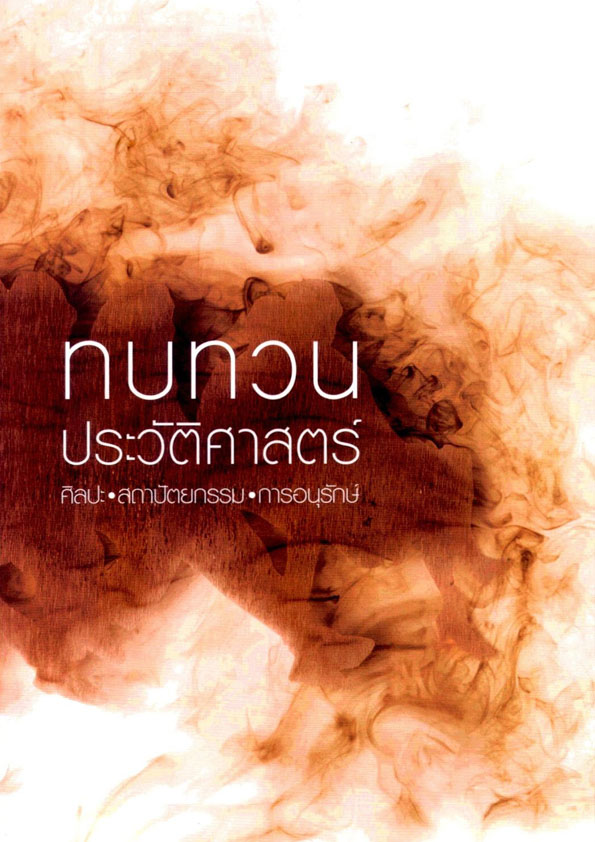การต่อเนื่องและการเปลี่ยนแปลงของประเพณีที่เกี่ยวข้องกับเรือนพื้นถิ่นชายน้ำในลุ่มน้ำภาคกลาง Continuity and change in riparian vernacular building traditions in the Central Plan region of Thailand
Main Article Content
Abstract
บทคัดย่อ
บทความนี้เป็นการศึกษาการต่อเนื่องและการเปลี่ยนแปลงของประเพณีที่เกี่ยวข้องกับสถาปัตยกรรมไทยพื้นถิ่นชายน้ำที่เกิดจากผลกระทบของความเป็นสมัยใหม่ ด้วยการตรวจสอบความสัมพันธ์ต่อกันระหว่างด้านวัตถุ (Material) สังคม (Social) และวัฒนธรรม (Culture) รวมถึงการรับรู้ของชาวบ้านต่อประเพณีที่เกี่ยวข้องกับสถาปัตยกรรมพื้นถิ่นของตนและการเปลี่ยนแปลงอันเนื่องมาจากความเป็นสมัยใหม่ โดยเลือกพื้นที่ศึกษาในบริเวณลุ่มน้ำเจ้าพระยา ภาคกลางของประเทศไทย ที่ซึ่งสภาพแวดล้อมทางน้ำได้สร้างลักษณะเฉพาะให้แก่วัฒนธรรมท้องถิ่นมาเป็นเวลายาวนาน ถิ่นฐานชายน้ำคือบริเวณที่ชีวิตในทุกๆ ด้าน ทั้งเกษตรกรรม คมนาคม เศรษฐกิจ และสังคมต้องพึ่งพาแม่น้ำลำคลอง ชุมชนและบ้านเรือนตั้งอยู่ในภูมิประเทศที่เป็นชายน้ำ
ความเป็นสมัยใหม่ (Modernisation) มีบทบาทสำคัญในการพัฒนาชนบทของประเทศไทยตั้งแต่ประมาณทศวรรษ 2500 ซึ่งส่วนมากเป็นการพัฒนาทางบก การขยายตัวของถนนเป็นตัวการสำคัญที่เร่งการเปลี่ยนแปลงและขัดแย้งกับวัฒนธรรมที่เคยผูกพันใกล้ชิดกับแม่น้ำลำคลองในทุกด้าน อย่างไรก็ตาม เมื่อเวลาผ่านไปความเป็นสมัยใหม่บางอย่างก็ถูกปรับให้เข้ากันได้กับประเพณีอันมีค่าโดยชาวบ้านเอง จึงมีคำถามตามมาว่า อะไรเปลี่ยนแปลง อะไรยังคงต่อเนื่องหรือคงเดิม และด้วยเหตุใด ผู้คนปรับตัวเองให้เข้ากับการเปลี่ยนแปลงได้อย่างไร และประเพณีกับสมัยใหม่ประนีประนอมกันในปัจจุบันอย่างไร
การศึกษานี้เน้นไปที่ธรรมชาติของประเพณีที่เกี่ยวข้องกับบ้านพื้นถิ่นที่มีการต่อเนื่องและปรับตัวต่อการท้าทายทางวัฒนธรรม สิ่งแวดล้อมและสภาพการณ์ปัจจุบัน ถึงแม้ความทันสมัยจะเข้ามามีบทบาทในระดับที่มากน้อยต่างกัน ประเพณีที่เกี่ยวข้องกับบ้านพื้นถิ่นของชุมชนชายน้ำยังคงต่อเนื่องต่อไป เห็นได้จากผลการศึกษาที่เกี่ยวกับความสัมพันธ์ของเครือญาติ การรับรู้ต่อสิ่งแวดล้อมที่เป็นน้ำ และรูปแบบใหม่ของบ้านทรงไทยสมัยใหม่ แน่นอนว่าประเพณีพื้นถิ่นมีการเปลี่ยนแปลงปรับปรุงในบางองค์ประกอบมาตลอด แต่ความเป็นประเพณีก็ยังสามารถต่อเนื่องอยู่ได้ถึงแม้หลายสิ่งจะเปลี่ยนไป แสดงให้เห็นถึงธรรมชาติที่ไม่หยุดนิ่งของความเป็นประเพณี การประนีประนอมระหว่างความเป็นประเพณีกับความเป็นสมัยใหม่ที่เห็นเป็นรูปธรรมในบ้านทรงไทยใหม่ย่อมยืนยันได้ดี ยิ่งไปกว่านั้นยังได้พบอีกว่าหากปราศจากการศึกษาการรับรู้ของชาวบ้าน (Local People’s perception) ข้อมูลจากการสังเกตของผู้ศึกษาอย่างเดียวไม่สามารถทำให้การศึกษานี้สมบูรณ์ได้
Abstract
The purpose of this research is to examine the continuity and change of Thai riparian vernacular building. In particular it focuses on the impacts of modernity by investigating the interrelationships between material, social and cultural aspects as well as local people’s perceptions of their vernacular building traditions, and changes related to medernisation. This study concentrates on the Chao Phraya River Basin, the central region of Thailand, where the riparian environment has characterized local culture for a long period of time. Riparian settlements are those in which agricultural, economic and social life are dependent on rivers, streams or canals ; and settlement locations and settings are closely tied to riverine geography.
Modernisation played an important role in Thailand’s rural development in the 1960s, mostly focused on land development. The extension o roads was a powerful agent that has caused accelerated changes and conflicts with traditional ways of life, in which almost every aspect of people’s lives used to focus on rivers, streams and canals. However, as time passed, people have adapted modernity to their valuable traditions. This raises the questions : what is changing, what staying the same, and why? How do people adjust themselves to changes and how are tradition and modernity compromised in the present time?
The findings in this study emphasise the nature of continuity and change of vernacular traditions, whereby they have been continued and adapted to cultural and environmental challenges and modern circumstances. Even though modernization has been involved to a greater or lesser degree, the vernacular building traditions of the riparian communities still continue, as seen from the research findings dealing with relationships among relatives, the perception of water environment, and the new forms of the traditional Thai houses. Indeed, the vernacular traditions have been changed, adapted and modified in some elements, so traditions can continue even if many things change, revealing their dynamic nature. The compromise between tradition and modernity objectified in the modern traditional Thai house is a good confirmation of this. Moreover, it was found that without local people’s perception, the information from observation alone could not complete this research.
